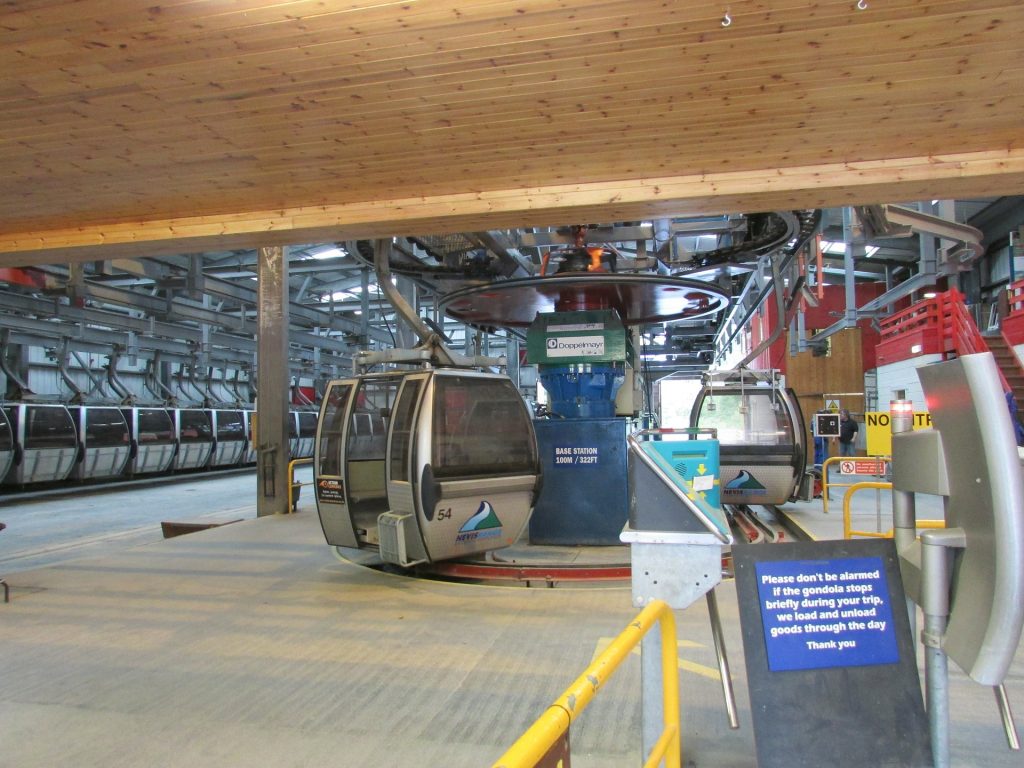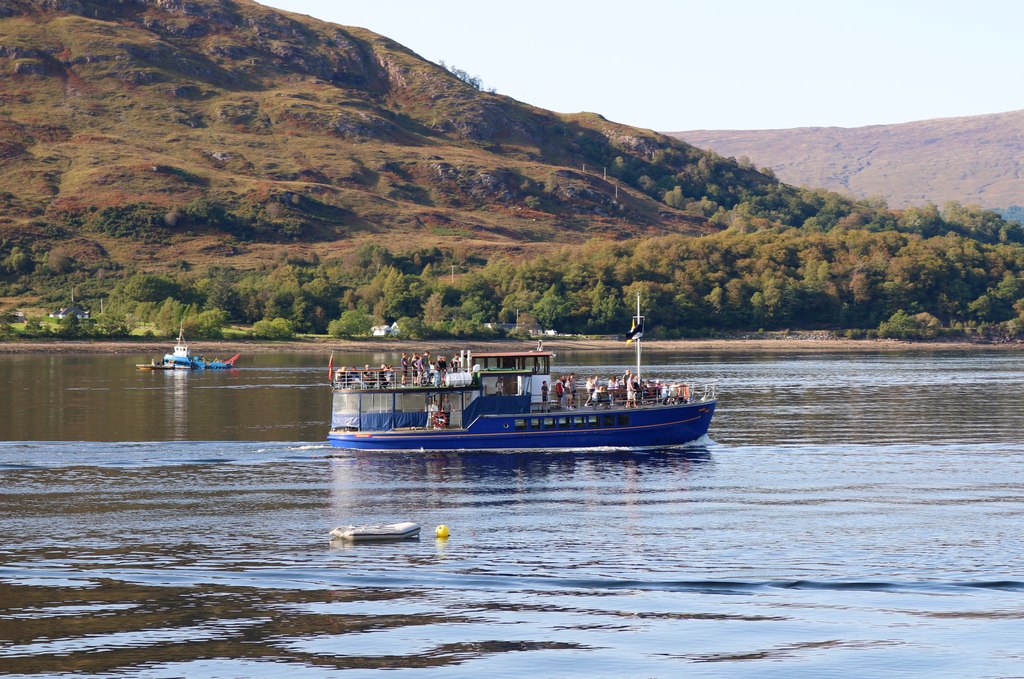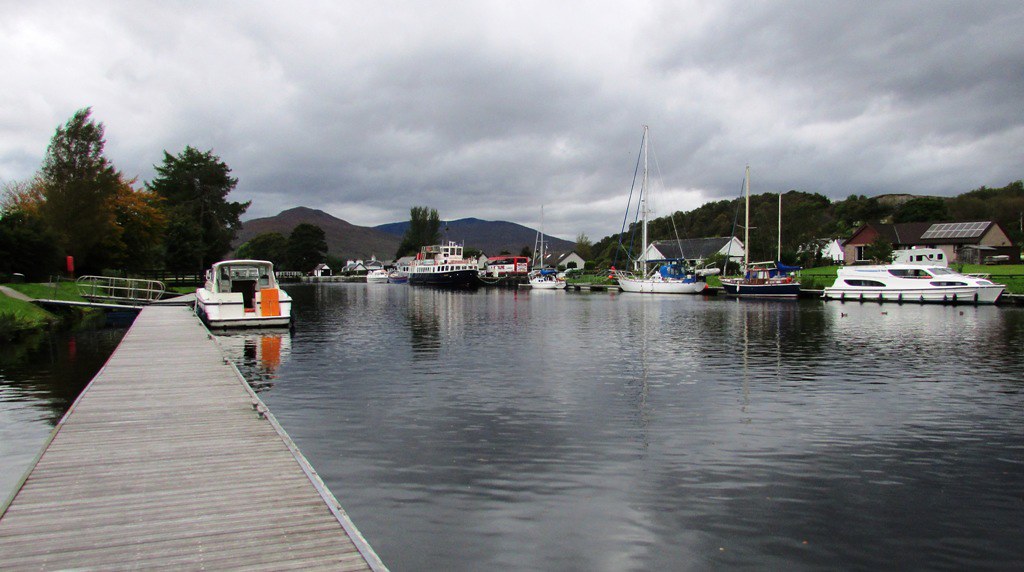Most visitors to Scotland will be keen to travel the castle trail, the whisky trail or visit the many historic sites and areas or soak up the culture of the big cities. Many will be keen to immerse themselves in the highland landscapes and possibly seek out those places their ancestors came from. There is nothing wrong with these activities – many visitors will have a wonderful time exploring Scotland.
 But what about the native Scots? What do they do, where do they go for their ‘staycations’? Well, one of the most popular areas in the west of Scotland is Loch Lomond and the Trossachs National Park. Loch Lomond lake (the largest loch in Britain by surface area) is Scotland’s premier water sports location.
But what about the native Scots? What do they do, where do they go for their ‘staycations’? Well, one of the most popular areas in the west of Scotland is Loch Lomond and the Trossachs National Park. Loch Lomond lake (the largest loch in Britain by surface area) is Scotland’s premier water sports location.
 Yachting, power boating, paddle boarding, kayaking, water skiing and angling (both game and coarse fishing) can be had on the loch and anglers can be sure of a varied catch with Loch Lomond fishing since Loch Lomond has more species of fish than any other loch in Scotland). And to answer a fairly common question from non-Scots, on whether the Loch Ness monster is found in Loch Lomond – the answer is no. It is said to be found in Loch Ness and you can read about that here.
Yachting, power boating, paddle boarding, kayaking, water skiing and angling (both game and coarse fishing) can be had on the loch and anglers can be sure of a varied catch with Loch Lomond fishing since Loch Lomond has more species of fish than any other loch in Scotland). And to answer a fairly common question from non-Scots, on whether the Loch Ness monster is found in Loch Lomond – the answer is no. It is said to be found in Loch Ness and you can read about that here.
 Loch Lomond contains about thirty islands (a few of which are seasonally inhabited) and boat excursions are available around some of them. Balloch, a town on the southern shore of the loch, has a large marina and is the base for several boating tours which range up and down the loch. It is also the place to go for boating enthusiasts who simply wish to admire the huge range of small pleasure craft which use the marina.
Loch Lomond contains about thirty islands (a few of which are seasonally inhabited) and boat excursions are available around some of them. Balloch, a town on the southern shore of the loch, has a large marina and is the base for several boating tours which range up and down the loch. It is also the place to go for boating enthusiasts who simply wish to admire the huge range of small pleasure craft which use the marina.
 Balloch is also where you will find the ‘Maid of the Loch’, a paddle steamer which used to sail Loch Lomond but is now moored at Balloch Pier whilst funds are raised to, hopefully, return it to its previous life carrying passengers and sightseers up and down the loch. In the meantime she serves as a restaurant, bar and events venue. If you’re in the area and feeling a bit peckish you could do worse than visit her.
Balloch is also where you will find the ‘Maid of the Loch’, a paddle steamer which used to sail Loch Lomond but is now moored at Balloch Pier whilst funds are raised to, hopefully, return it to its previous life carrying passengers and sightseers up and down the loch. In the meantime she serves as a restaurant, bar and events venue. If you’re in the area and feeling a bit peckish you could do worse than visit her.
 Getting around Loch Lomond is surprisingly easy since a waterbus service runs on the loch. If you need to get from one place to another or just want to take in the views, the waterbus allows you to enjoy a relaxing journey and also have time onshore to enjoy a scenic lunch stop. Scheduled services depart from various piers and pontoons strategically placed on the loch allowing you to take in the stunning scenery at your leisure – and feel free to bring your four-legged friends along for the trip!
Getting around Loch Lomond is surprisingly easy since a waterbus service runs on the loch. If you need to get from one place to another or just want to take in the views, the waterbus allows you to enjoy a relaxing journey and also have time onshore to enjoy a scenic lunch stop. Scheduled services depart from various piers and pontoons strategically placed on the loch allowing you to take in the stunning scenery at your leisure – and feel free to bring your four-legged friends along for the trip!
 Of course not everyone is into water sports but don’t despair; Loch Lomond lies within the 720-square-mile Loch Lomond and the Trossachs National Park. Established in 2002 this was the first of Scotland’s national parks and it covers a large portion of the western part of the southern highlands. It is the fourth largest national park in the British Isles.
Of course not everyone is into water sports but don’t despair; Loch Lomond lies within the 720-square-mile Loch Lomond and the Trossachs National Park. Established in 2002 this was the first of Scotland’s national parks and it covers a large portion of the western part of the southern highlands. It is the fourth largest national park in the British Isles.
Included within its boundaries are many other lochs (although none as large as Loch Lomond) and no less than 21 of Scotland’s Munros (mountains over 3000 feet) one of which is Ben Lomond, Scotland’s most southerly Munro, which towers over Loch Lomond from its eastern side and, if you have the energy to reach its summit, is a magnificent viewpoint for the entire 22-mile length of the loch.
 The entire area of Loch Lomond and the Trossachs National Park offers wonderful opportunities for outdoor adventures. Apart from the water sports there are opportunities for mountaineering, hill walking, orienteering, mountain biking and more and the range of wildlife to be seen in the park both on Loch Lomond itself or around its shores and in the wider park is astounding – the water birds alone make for spectacular sights both summer and winter.
The entire area of Loch Lomond and the Trossachs National Park offers wonderful opportunities for outdoor adventures. Apart from the water sports there are opportunities for mountaineering, hill walking, orienteering, mountain biking and more and the range of wildlife to be seen in the park both on Loch Lomond itself or around its shores and in the wider park is astounding – the water birds alone make for spectacular sights both summer and winter.
 After visitors have indulged themselves in their favourite outdoor activities there is also the opportunity to try some indoor activities. At the southern end of the loch, close to Balloch is Loch Lomond Shores. With excellent views over the loch this upmarket shopping experience is a relaxing way to unwind after a hard day’s exploring.
After visitors have indulged themselves in their favourite outdoor activities there is also the opportunity to try some indoor activities. At the southern end of the loch, close to Balloch is Loch Lomond Shores. With excellent views over the loch this upmarket shopping experience is a relaxing way to unwind after a hard day’s exploring.
The nearby Drumkinnon Tower is home to the Loch Lomond Aquarium whose 26 exhibits contain mainly native Scottish species. It features touch pools, ray tanks and a tropical ocean tunnel. Drumkinnon Tower also has a 350-seat cinema and a cafe. Don’t forget to visit the National Park Gateway Centre where lots of information about the park can be found including its history and the background into its establishment in 2002.
 Loch Lomond is just a hop, skip and a jump away from Glasgow, Scotland’s biggest city and the wider area of the Trossachs National Park is also easy to reach from most of the central belt of Scotland making this one of the most popular ‘staycation’ destinations in Scotland. Surely it’s worth a visit if you happen to have a day or two to spare?
Loch Lomond is just a hop, skip and a jump away from Glasgow, Scotland’s biggest city and the wider area of the Trossachs National Park is also easy to reach from most of the central belt of Scotland making this one of the most popular ‘staycation’ destinations in Scotland. Surely it’s worth a visit if you happen to have a day or two to spare?
For those who do decide on a longer stay the area has a plethora of hotels and guest houses ranging from small and cosy to big and beautiful and there are numerous camping and caravanning sites available so you’re bound to find something to your liking.
Loch Lomond Map and Information:
YouTube Video: Watch a video of the Loch
One of the most famous Scottish songs is about Loch Lomond. Here is a beautiful version of it.
The song itself is about a Scottish soldier who is to be executed. Legend has it that the spirits of Scots who die abroad return to Scotland by the “Low Road” and the singer says they will return by the “low road”.
 Lying at the head of Loch Awe, Scotland’s longest freshwater loch, you will find a most curious thing – a ‘hollow mountain’. Ben Cruachan, one of Scotland’s Munros (mountains over 3000 feet) is home to the only underground, pumped, storage hydroelectric power station in Scotland.
Lying at the head of Loch Awe, Scotland’s longest freshwater loch, you will find a most curious thing – a ‘hollow mountain’. Ben Cruachan, one of Scotland’s Munros (mountains over 3000 feet) is home to the only underground, pumped, storage hydroelectric power station in Scotland.
 Ben Cruachan Power Station can be found at the head of Loch Awe on the main A85 Oban to Crianlarich road. There is a cafe and picnic area where you can enjoy a light lunch in a scenic spot overlooking the loch as well as a gift shop and a large, free car park.
Ben Cruachan Power Station can be found at the head of Loch Awe on the main A85 Oban to Crianlarich road. There is a cafe and picnic area where you can enjoy a light lunch in a scenic spot overlooking the loch as well as a gift shop and a large, free car park. Located at the western end of the Great Glen at the head of Loch Linnhe Fort William is often known as ‘The Outdoor Capital of Scotland’ because of its excellent position as a base for outdoor activities. With a population of about 11,000 this highland town is never quiet! Summer or winter thousands of tourists arrive in the area, many of them seeking adventure on the hills and mountains which surround the town.
Located at the western end of the Great Glen at the head of Loch Linnhe Fort William is often known as ‘The Outdoor Capital of Scotland’ because of its excellent position as a base for outdoor activities. With a population of about 11,000 this highland town is never quiet! Summer or winter thousands of tourists arrive in the area, many of them seeking adventure on the hills and mountains which surround the town. And what a collection of fine mountains there are! Ben Nevis (4413 ft/1345 m), the UK’s highest mountain, towers over the town – so close in fact that to get a decent view of it one has to travel a couple of miles outside of the town!
And what a collection of fine mountains there are! Ben Nevis (4413 ft/1345 m), the UK’s highest mountain, towers over the town – so close in fact that to get a decent view of it one has to travel a couple of miles outside of the town!
 There are many adventures to be had in the great outdoors in the area from hillwalking to rock climbing, ice climbing, kayaking, wildlife spotting (on land and sea), fishing, diving, off-road driving and motorcycling, boat hire and more and all of these can be indulged in by yourself (provided you have the necessary equipment and expertise of course) or under the supervision of one of the various guided tours available in the area.
There are many adventures to be had in the great outdoors in the area from hillwalking to rock climbing, ice climbing, kayaking, wildlife spotting (on land and sea), fishing, diving, off-road driving and motorcycling, boat hire and more and all of these can be indulged in by yourself (provided you have the necessary equipment and expertise of course) or under the supervision of one of the various guided tours available in the area. For those whose interests don’t lean towards outdoor activities Fort William still has much to offer. The gaelic name for Fort William is An Gearasdan which means ‘The Fort’ and many local people still refer to it by that name today and the remains of the original fort are still worth a visit. This was built by the English in an attempt to pacify the clans during the turbulent period of the various Jacobite rebellions which culminated in the Scottish army’s defeat at Culloden in 1746. In the town’s High Street the West Highland Museum is a great place to go to find out more of the history of the town and surrounding area.
For those whose interests don’t lean towards outdoor activities Fort William still has much to offer. The gaelic name for Fort William is An Gearasdan which means ‘The Fort’ and many local people still refer to it by that name today and the remains of the original fort are still worth a visit. This was built by the English in an attempt to pacify the clans during the turbulent period of the various Jacobite rebellions which culminated in the Scottish army’s defeat at Culloden in 1746. In the town’s High Street the West Highland Museum is a great place to go to find out more of the history of the town and surrounding area.
 Fort William lies at the western end of the Great Glen, a huge gash in the land running between
Fort William lies at the western end of the Great Glen, a huge gash in the land running between  The surrounding area offers spectacular views of mountains, lochs and rivers as well as some fascinating history and, if you chose wisely, you will be treated to the finest Scottish cuisine available in one of the several former castles (yes, that’s right, castles) which dot the area and are now hotels. Some of them take a little trouble to find but a visit to Fort William and the surrounding area will reward you with sights and experiences (and tastes) which will live in your memory for a long time.
The surrounding area offers spectacular views of mountains, lochs and rivers as well as some fascinating history and, if you chose wisely, you will be treated to the finest Scottish cuisine available in one of the several former castles (yes, that’s right, castles) which dot the area and are now hotels. Some of them take a little trouble to find but a visit to Fort William and the surrounding area will reward you with sights and experiences (and tastes) which will live in your memory for a long time.